Archivo de noticias y eventos
301 - 350 de un total de 1805
También puede acceder a la lista de noticias publicadas en los medios relacionadas con el Instituto de Astrofísica de Andalucía - CSIC.
Pages

|
21/10/2021 - 12:30
Unveiling the dynamical stage of galaxy clusters through the intracluster light The intracluster light (ICL) is the most unexplored component of galaxy clusters. It is defined as a low surface brightness, extended emission composed by stars that are bound by the potential of the cluster but do not belong to any galaxy in particular. Simulations predict that minor and major mergers can mainly drive the formation of ICL, specially for z Dra. Yolanda Jimenez-Teja |

|
16/12/2021 - 12:30
Lighthouse Piercing Through the Storm Clouds in Massive Star Formation Massive stars play crucial roles in determining the physical and chemical evolution of galaxies. They shape their environment from early in their protostellar phase when they blast the surrounding with powerful jets, up until their violent deaths in the form of supernova. However, they form deeply embedded in their parental clouds, making it challenging to directly observe these stars and immediate environments. Notwithstanding, their massive... Dr Ruben Fedriani |

|
09/12/2021 - 12:30
SO Webloquio: Unveiling the unseen magnetized universe with MeerKAT Galaxy clusters are known to harbour magnetic fields, the nature of which remains unresolved. Intra-cluster magnetic fields can be observed at the density contact discontinuity formed by cool and dense plasma running into hot ambient plasma, and the discontinuity exists near the second brightest galaxy, MRC0600-399, in the merging galaxy cluster Abell 3376 (redshift 0.0461). Elongated X-ray emission in the east–west direction shows a comet-like... Dr. James Chibueze |
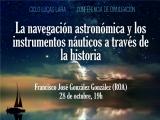
|
28/10/2021 - 19:00
La navegación astronómica y los instrumentos náuticos a través de la historia Al inicio de la época de los grandes descubrimientos y de las exploraciones oceánicas, los navegantes europeos contaban con medios muy poco fiables para emprender una travesía marítima de larga duración (algunas cartas náuticas, una brújula para marcar el rumbo, técnicas rudimentarias para calcular la latitud y, desde finales del siglo XVI, la corredera para calcular la velocidad del barco). A lo largo de los siglos XVI, XVII y XVIII, se produjo... Francisco José González González |

|
25/11/2021 - 12:30
SO. Webloquia: AYA: projects and human resources in grants managed by the Spanish State Research Agency This presentation will review data and results of the national calls for projects and human resources managed by the AYA team in the AEI: research projects (PGC and Challenges), acquisition of scientific-technical equipment, proof of concept projects and strategic projects; and human resources, predoctoral hiring FPI, Juan de la Cierva training, Juan de la Cierva incorporation, Ramón y Cajal and R+D+I technical staff. Dra. Inmaculada Dominguez |

|
10/02/2022 - 12:30
A high-fidelity sky mock of DESI galaxies in the LCDM cosmology By using N-body simulations in which different cosmologies have been assumed and by comparing them with large-scale galaxy surveys, we can constrain cosmological parameters, even ruling out some cosmological models. In this talk I will describe how we use the Uchuu simulation for this purpose. Uchuu is an N-body dark matter simulation that has been created by an international team of researchers from Japan, Spain, USA, Argentina, Australia,... Julia Ereza |

|
02/12/2021 - 12:30
The PUMA project. Mergers and feedback in local ULIRGs resolved by ALMA and MUSE+AO Galaxy mergers and interactions have a key role in the evolution of galaxies, specially at high-z when they were more common than today. Mergers trigger starbursts and AGN activity, which are both regulated by negative feedback processes, as well as can turn spiral galaxies into massive quiescent objects. The local counterparts of these major interactions and mergers are local ULIRGs (L(IR)/Lsun > 1e12) which, thanks to their proximity, allow... Dr. Miguel Pereira Santaella |

|
07/10/2021 - 12:30
X-ray binary accretion states in AGN? Sensing the accretion disc of supermassive black holes with mid-IR nebular lines Accretion states, which are universally observed in stellar-mass black holes in X-ray binaries, are also anticipated in active galactic nuclei (AGN). This is the case at low luminosities, when the jet-corona coupling dominates the energy output in both populations. Previous attempts to extend this framework to a wider AGN population have been extremely challenging due to heavy hydrogen absorption of the accretion disc continuum and starlight... Dr Juan Antonio Fernández Ontiveros |

|
03/02/2022 - 12:30
SO Webloquio: The Milky Way's young substellar population Young clusters and star forming regions are home to a large number of substellar objects with masses below the hydrogen-burning limit at 0.075 MSun. Most of our knowledge about their populations comes from nearby regions (d lower 400 pc), where we find consistent formation rates of 2-5 young brown dwarfs per 10 newborn stars. Brown dwarf theories, on the other hand, predict that high gas or stellar densities, as well as the presence of massive... Dra Koraljka Muzic |

|
11/11/2021 - 12:30
SO Webloquio: Stellar winds and their effects on exoplanets As the wind outflows from a star, it permeates the interplanetary medium, interacting with any planet it encounters. In this talk I will review some recent works on winds of low-mass stars and discuss the impact stellar winds can have on surrounding exoplanets. Compared to the physical interactions known to take place between the solar wind and the solar system planets, the interaction between stellar winds and exoplanets can be significantly... Dra Aline Vidotto |
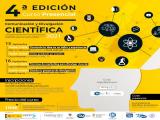
|
15/09/2021 - 16/09/2021
IV Course on Scientific Dissemination Techniques Granada |

|
18/11/2021 - 12:30
SO Webloquio: MOSAIC: the multi-object spectrograph for ELT MOSAIC will be the Multi-Object spectrograph for the ELT telescope. First light for this instrument is foreseen for 2031. MOSAIC is driven by scientific cases that include the study of the first galaxies in the Universe, the evolution of the large scale structure, resolved stellar populations beyond the Local Group, and the formation of exo-planets in different environments, among others. The instrumental concept includes visible spectrographs (... Dr Lidia Tasca |

|
02/09/2021 - 15:00
The Lucy mission: exploring the unexplored Lucy is planned to launch in 2021 on a United Launch Alliance Atlas V launch vehicle, after which it will gain two gravity assists from Earth; one in 2022, and one in 2024. In 2025, it will fly by the inner main- belt asteroid (52246) Donaldjohanson, which was named after the discoverer of the Lucy hominid fossil. In 2027, it will arrive at the L4 Trojan cloud (the Greek camp of asteroids that orbits about 60° ahead of Jupiter), where it will... Dr. Adriana Ocampo |
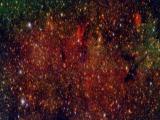
|
15/11/2021 - 19/11/2021
IAA Severo Ochoa Advanced School on Star Formation Granada |
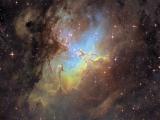
|
29/11/2021 - 03/12/2021
2nd IAA-CSIC Severo Ochoa School on Statistics, Data Mining, and Machine Learning Granada |

|
20/09/2021 - 23/09/2021
SO Instrumentation School: III. Beckhoff Motion Control Granada |

|
16/09/2021 - 12:30
Precision cosmology: now what? The standard cosmological model (the LCDM model) has been established and its parameters are now measured with unprecedented precision. This model successfully describes observations from widely different epochs of the Universe, from primordial nucleosynthesis all the way to the present day. However, there is a big difference between modelling and understanding. The next decade will see the era of large surveys; a large coordinated effort of... Dra. Licia Verde |
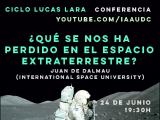
|
24/06/2021 - 19:30
¿Qué se nos ha perdido en el espacio extraterrestre? Juan de Dalmau, presidente de la International Space University y exdirector de operaciones de lanzamiento de cohetes Ariane en la Guayana Francesa, responderá a preguntas frecuentes sobre la exploración espacial Juan de Dalmau |

|
22/07/2021 - 12:30
Revealing cosmic magnetism with the Square Kilometre Array and its pathfinders Magnetism is an enigmatic but crucial element of our Universe. The structure and strength of magnetic fields are important for a full understanding of astrophysics over a tremendous range of scales: from stellar systems, to star forming regions, the properties and evolution of individual galaxies, galaxy groups and clusters, and even as a major element of the Cosmic Web. The Square Kilometre Array (SKA) promises to deliver a revolutionary view... Dr. George Heald |

|
01/07/2021 - 12:30
SO Colloquium: Interstellar planetesimals: 1I/Oumuamua and 2I/Borisov Extensive surveys of extrasolar planets and of circumstellar disks around nearby stars show that planets and dust-producing planetesimals, similar to the asteroids, Kuiper belt objects and comets in our solar system, are ubiquitous around others stars. The planetesimal population of the young solar system was very numerous initially but the majority of the objects ended up ejected due to gravitational perturbations with the planets and other... Dra. Amaya Moro-Martín |

|
03/06/2021
Concierto "Hola Tierra" desde el Observatorio de Calar Alto Concierto de presentación del disco "Hola Tierra" desde el Observatorio de Calar Alto |

|
09/06/2021 - 10/06/2021
Scientific writing and presentation in astronomy On Line |
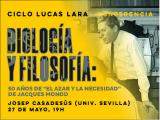
|
27/05/2021 - 19:00
Biología y filosofía. 50 años de "El azar y la necesidad" de Jacques Monod En el libro "El azar y la necesidad", publicado en 1970, Monod examina las implicaciones filosóficas de la biología moderna Josep Casadesús |

|
09/06/2021 - 09/06/2021
Horizon Europe: Workshop on RESEARCH INFRASTRUCTURE On line |

|
21/06/2021 - 25/06/2021
English for Academic Purposes - an online workshop series for young researchers On line |

|
08/06/2021 - 16:00
K-band interferometric imaging of the M-type Mira star ‘R Car’ The final stage of low to intermediate-mass stars, also known as the asymptotic giant branch (AGB), presents circumstellar envelopes (CSE); however the mechanisms that lead to the formation of these structures, at least in M-type AGBs, are still not well understood. In order to grasp the characteristics of the CSE, it has been found that the CO molecule plays an important role due to its stability against dissociation, making it a tracer of the... M.Sc. Abel Rosales-Guzmán |

|
29/04/2021 - 19:00
Azarquiel, el cincelador de ideas La historia de la ciencia en España nunca ha sido un tema valorado en su justa medida, incluso por los propios científicos españoles en la actualidad. En esta charla nos centraremos en la figura de Azarquiel, representante de la ciencia del medievo . Antonio Claret |

|
14/06/2021 - 14/06/2021
An Introduction to IFU Spectroscopy On line |

|
10/06/2021 - 01/07/2021
Ansys Workbench for Scientific Instrumentation Online |

|
11/05/2021 - 12:30
Is the Bremer Deep Field Ionised at z=7? The talk will show that the population of star forming galaxies in the Bremer Deep Field (BDF) has formed two large ionised bubbles. The sources in the BDF have been completed with a set of expected, though not detected, low luminosity sources at z ~ 7. We have estimated the number of ionising photons produced per second by the different star forming galaxies in the BDF and have compared it with the number that would be required to reionise... Jose Miguel Rodriguez Espinosa |

|
25/03/2021 - 19:00
Einstein y la Relatividad General. El inicio de la cosmología moderna La Teoría General de la Relatividad ha representado, junto con la física cuántica, el inicio de la denominada física moderna. Jordi Cepa Nogué |

|
10/06/2021 - 12:30
SO Webloquio: Auroral Radio Emission in stars and exoplanetary systems In recent years, an interesting type of coherent radio emission has been detected in a wide variety of stars across the HR diagram, from hot magnetic A-B MS stars to Ultra Cool dwarfs: the Auroral Radio Emission (ARE), previously observed by spacecrafts in the magnetosphere of planets of the Solar System. Very different objects are showing the same phenomenon. What do they have in common? The first star with ARE was CU Virginis, an early type... Dr. Corrado Trigilio |

|
28/04/2021 - 30/04/2021
SO instrumentation school: High level sinthesys for Xilinx FPGAs using Vivado HLS On line |

|
07/04/2021 - 07/04/2021
Matplotlib for Beginners - A Brief Severo Ochoa Workshop Online |

|
17/06/2021 - 12:30
SO Webloquio: Star-formation and accretion in galaxies from near to far: the LeMMINGs and eMERGE e-MERLIN legacy programmes Radio emission provides a uniquely powerful and unobscured probe of the two key physical processes underway in, and powering, galaxies and their evolution: Accretion on to their central SMBH, and star-formation processes. To explore these processes, and their role in galaxy evolution, we require very high resolution (sub-arcsecond or better), sensitive imaging at radio wavelengths across large samples of galaxies in both the local and distant... Dr. Rob Beswick |

|
27/04/2021 - 12:30
SO Webloquio: Chaos and Instabilities in Planetary Systems The aim of this talk is to discuss recent results on the estimation of instability times through Shannon entropy and its application to planetary systems. We will analyze the complex relation between chaos and orbital instability, and how each is able to provide important information about the dynamical evolution of the system. Finally, we will analyze how different well known planetary systems These concepts will then be applied to several... Dr Cristian Beauge |

|
06/04/2021 - 13:30
SO Webloquio: James Webb Space Telescope Capabilities for Planet and Exoplanet Observations JWST, scheduled for launch in October, will bring a new generation of instruments, infrared detectors, and a passively cooled 6.5 m primary mirror to space-based astronomy. I will discuss its imaging and spectroscopic modes, which cover wavelengths from 0.6 - 28.5 microns, and the observatory's moving-target tracking, and coronagraphic and time-series modes for direct or transit observations of exoplanets. I will show some statistics for the... Dr. John Stansberry |

|
24/06/2021 - 12:30
SO Webloquio: Asteroid sample return: A laboratory perspective The new generation of sample return missions from small bodies is delivering to us fresh witnesses from the early Solar System. In this context, laboratory studies play a double role: on one hand, in-depth laboratory analysis of retrieved samples using state-of-the-art techniques give us an unprecedentedly detailed look at the formation and evolution of organic materials in asteroids; on the other hand, in the laboratory we can perform... Dr. Rosario Brunetto |

|
09/09/2021 - 17:00
SO Webloquio: A new look at our star: the Daniel K. Inouye Solar Telescope The Sun represents a template for much of our understanding of the workings of a "cool" star, and its proximity allows us to observe exquisite details at its surface, with current facilities routinely reaching resolutions of few hundreds of km on the solar disk. Yet, many questions still linger, in particular concerning the actual mechanism(s) that create and maintain a hot outer atmosphere (chromosphere, transition region and corona) as well as... Dr. Gianna Cauzzi |

|
27/05/2021 - 17:00
SO Webloquio: A Spanish in Boulder The opportunity to lead the US National Solar Observatory (managed by AURA) since 2013 has allowed me to understand the differences in how R... Dr. Valentin Martínez Pillet |

|
20/05/2021 - 12:30
SO WebLoquio: Regularly-spaced 8 micron cores as tracers of the earliest stages of star formation in the spiral arms of nearby galaxies Archival Spitzer Space Telescope images of most nearby spiral galaxies show prominent 8 micron emission cores when viewed with an unsharp mask technique. These cores have the IR colors of young star-forming regions, typically a million years old, behind several tens of magnitudes of optical extinction. They are usually invisible in optical images, and yet the sum of their masses divided by their likely age is comparable to the total star... Dr. Bruce Elmegreen |

|
13/05/2021 - 12:30
SO Webloquio: The HIRES/ELT consortium, instrument and science We present the results from the phase A study of ELT-HIRES, an optical-infrared, high-resolution spectrograph for ELT, which has just been completed by a consortium of 30 institutes from 12 countries forming a team of about 200 scientists and engineers. The top science cases of ELT-HIRES will be the detection of life signatures from exoplanet atmospheres, tests on the stability of Nature's fundamental couplings, the direct detection of the... Dr. Alessandro Marconi |

|
06/05/2021 - 12:30
SO Webloquio: Nuclear star clusters I review the current knowledge about nuclear star clusters (NSCs), and the spectacularly dense and massive assemblies of stars found at the centers of most galaxies. Understanding the formation, growth, and ultimate fate of NSCs is crucial for a complete picture of galaxy evolution. There is a clear transition mass in galaxies of ∼ 10^9 Msol where the characteristics of NSCs change. I argue that at lower masses, NSCs are formed primarily from... Dr. Nadine Neumayer |

|
30/03/2021 - 12:30
SO Webloquio: Star-forming Complexes in Local Mergers and High Redshift Galaxies Disk galaxies at high redshift contain star-forming complexes, or clumps, whose masses and sizes far exceed those of clumps in local non-interacting galaxies. However, our recent Hubble Space Telescope observations reveal that local merging galaxies can form massive clumps like those at high z, with the same range of physical size, surface density, age, and star formation rate. These similarities, combined with the loss at high redshift of low... Dr. Debra Elmegreen |
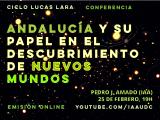
|
25/02/2021 - 19:00
Andalucía y su papel en el descubrimiento de nuevos mundos En veinticinco años hemos pasado de pensar que nuestro Sistema Solar era único en la Galaxia a conocer que hay miles de planetas ya detectados y que podría haber miles de millones ahí fuera Pedro J. Amado |

|
19/04/2021 - 23/04/2021
SOMACHINE 2 Machine Learning, Big Data, and Deep Learning in Astronomy On line |

|
29/04/2021 - 12:30
Extreme Blazars Blazars are jetted active Galactic Nuclei with the jet axis oriented close to the line of sight of the observer. Non-thermal emission processes in the jet cover the whole electromagnetic spectrum from radio wavelengths to TeV gamma rays, with a characteristic double-humped Spectral Energy Distribution (SED). Relativistic amplification effects on the observed fluxes make their jets ideal candidates for detection at any wavelength. A physically... Dr. Giacomo Bonnoli |

|
08/04/2021 - 12:30
On the effects of Initial Mass function on the galactic chemical enrichment: the role of Pair Instability Supernovae We built new sets of chemical yields from massive and very massive stars up to Mi ~ 350 Msun, by combining the wind ejecta extracted from our hydrostatic stellar evolution models with explosion ejecta from the literature. Using a simple chemical evolution code we analyse the effects of adopting different yield tables by comparing predictions against observations of stars in the solar vicinity. Our study indicates that PISN played a significant... Dr. Sabyasachi Goswami |

|
22/04/2021 - 12:30
Gas-poor clusters: what kind of beasts are they? The known variety of galaxy clusters is constantly increasing with our progress in understanding the severity of selection effects on observational samples and with obvious implications on cosmology and cluster physics. In the talk, after a general introduction on galaxy clusters and a reminder on selection effects, I present perhaps the first X-ray unbiased sample of clusters with known masses and X-ray follow-up, its more variegate nature... Dr. Stefano Andreon |

|
20/01/2021 - 20/01/2021
El cielo oscuro como recurso científico, cultural, medioambiental y turístico Sevilla, Virtual Format |